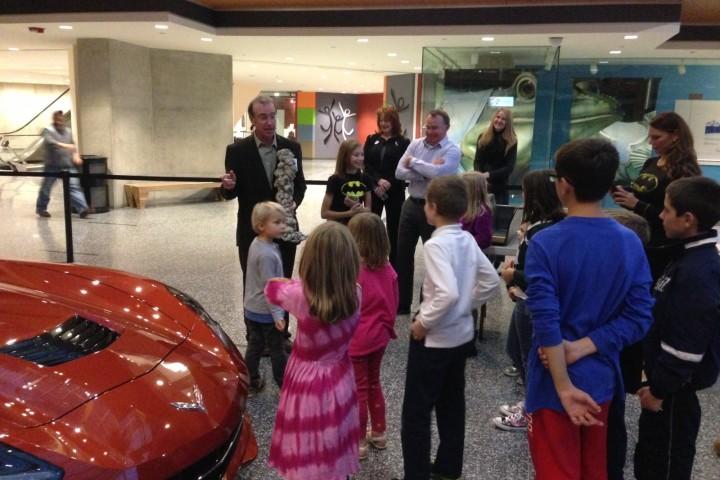Bats, Batteries and Bowling Green: How Chevy Might Help #SavetheBats
An adhesive used in production of the 2015 Chevrolet Corvette Stingray may help preserve a threatened bat species in North America.
Scared of bats?
Fair enough. But did you know just one bat eats up to 5,000 insects a night? More bats equals less mosquitos buzzing around your head. And less pesticides needed on our fruits and veggies to fend off those buggers.
These furry friends provide necessary protection to our ecosystem.
Unfortunately, a deadly fungus is killing them at a fast rate. Bats with white-nose syndrome act abnormally and wake from hibernation too frequently, leading to death.
The little brown bat—once the most common bat in North America—is actually being considered for protection under the U.S. Endangered Species Act as a result.
GM, with its penchant for recycling and habitat preservation, is channeling some creativity to help create more roosting areas for bats and hopefully slow transmission of the disease.
GM’s MaGyver, John Bradburn, lives by the mantra of seeing things not as they are, but what they can be.
Naturally, when he saw long piles of adhesive leftover from manufacturing the Corvette Stingray at our Bowling Green Assembly plant, the first thing he thought was: “These look like stalactites!”
John rallied the experts—folks from such non-governmental organizations as Bat Conservation International and the Organization for Bat Conservation—to test out the concept. Although there’s no cure for disease, these experts agree that remedies like nontoxic fungicides and artificial bat caves show promise. The stalactites give hibernating bats more surface area from which to hang, thus spreading them out around the cave.
So how does this material go from Corvette to cave?
First, robots apply a structural adhesive that helps join Corvette body parts, but the adhesive is purged regularly to keep the adhesive applicator clean and free of dried material. This dried gunk becomes the stalactite.
Although the bats took to it, the surface didn’t provide enough traction for them to really hang on. So, GM employed another byproduct—leftover anti-chip paint coating generated by our truck assembly plant in Fort Wayne, Indiana. Covering the stalactite with this textured coating provided enough grit that enabled their little claws to grip.
This isn’t the first batty project at GM. For the last several years, we’ve been creating bat houses out of scrap Chevrolet Volt battery covers. Just one of these houses can hold up to 150 little brown bats. So far, 232 of these bat houses have been installed on our properties and in other private and public lands in the United States.
A tweak of the design has led to 368 specially designed structures to serve wood ducks, owls, bluebirds and scaly-sided mergansers – an endangered species. We often work with local youth through schools, clubs and recreation centers to put the finishing touches on the nesting boxes.
Together we can all help #SavetheBats. Visit Save the Bats and National Bat Week on Facebook or read more at www.batcon.org and www.savebats.org/bat-week.





